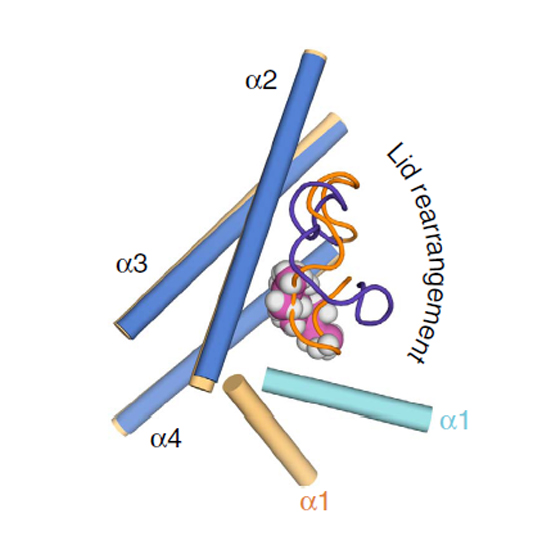Allosteric modulation of peroxisomal membrane protein recognition by farnesylation of the peroxisomal import receptor PEX19
10-Mar-2017
Nature Communications, 8, Article number: 14635 (2017), doi:10.1038/ncomms14635
Nature Communications, online article
The transport of peroxisomal membrane proteins (PMPs) requires the soluble PEX19 protein as chaperone and import receptor. Recognition of cargo PMPs by the C-terminal domain (CTD) of PEX19 is required for peroxisome biogenesis in vivo. Farnesylation at a C-terminal CaaX motif in PEX19 enhances the PMP interaction, but the underlying molecular mechanisms are unknown. Here, we report the NMR-derived structure of the farnesylated human PEX19 CTD, which reveals that the farnesyl moiety is buried in an internal hydrophobic cavity. This induces substantial conformational changes that allosterically reshape the PEX19 surface to form two hydrophobic pockets for the recognition of conserved aromatic/aliphatic side chains in PMPs. Mutations of PEX19 residues that either mediate farnesyl contacts or are directly involved in PMP recognition abolish cargo binding and cannot complement a ΔPEX19 phenotype in human Zellweger patient fibroblasts. Our results demonstrate an allosteric mechanism for the modulation of protein function by farnesylation.











